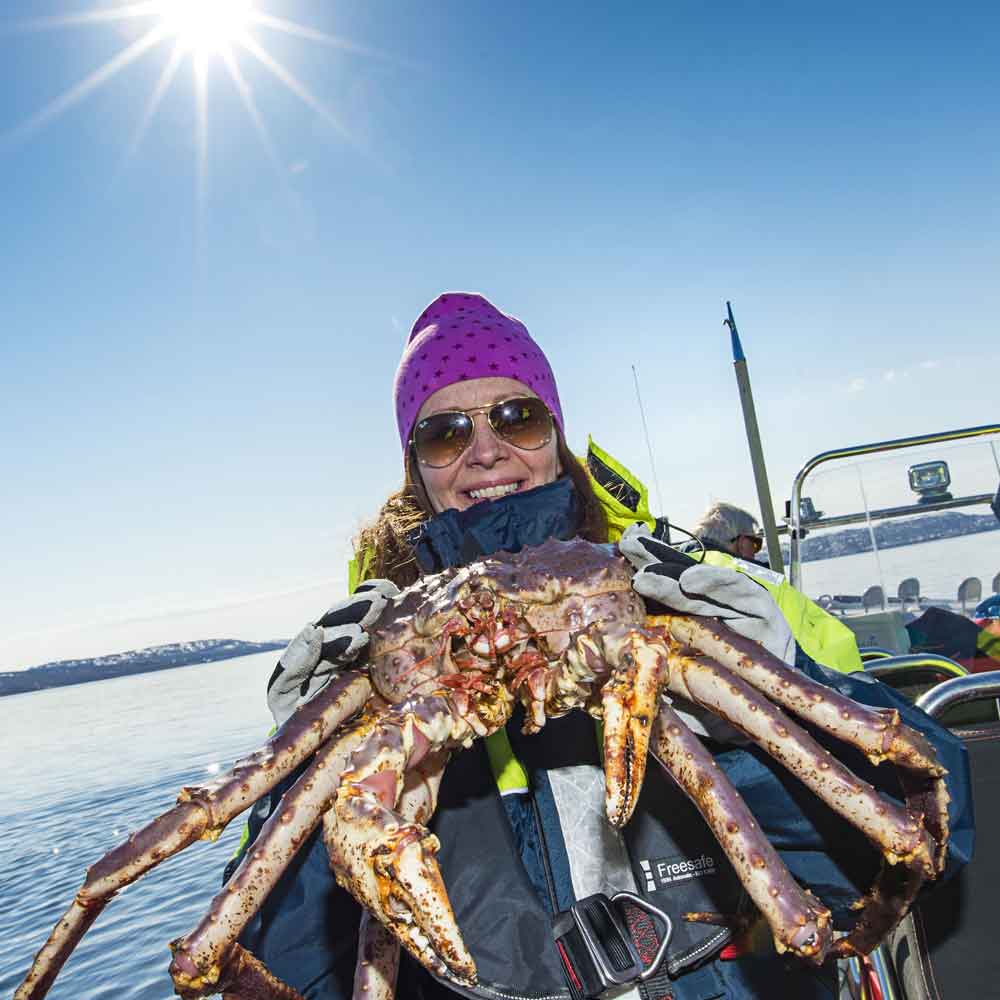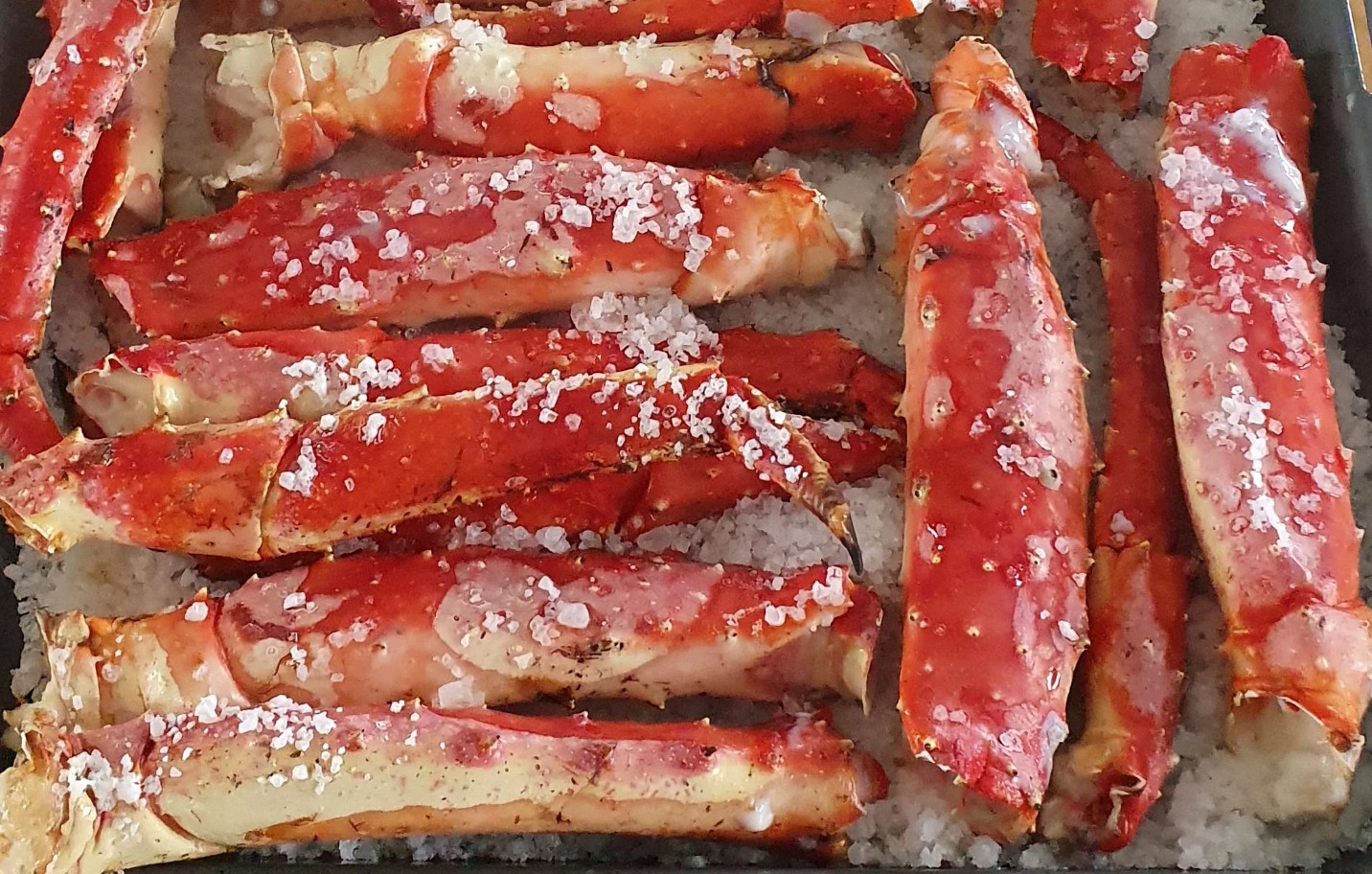King crab fishing has become a global phenomenon thanks to its portrayal in the hit TV series Deadliest Catch. This dangerous yet highly lucrative occupation captures the imagination of millions who marvel at the courage and tenacity of the fishermen. The king crab fishing show provides a gripping glimpse into the lives of those who brave the treacherous waters of the Bering Sea in pursuit of the elusive red king crab.
The world of king crab fishing is a high-stakes game where fishermen risk life and limb for the promise of financial reward. The show has brought this perilous profession to the forefront, showcasing the challenges and triumphs of those who dedicate their lives to this demanding trade. As viewers tune in week after week, they gain a deeper appreciation for the complexities involved in harvesting one of the world's most valuable seafood commodities.
From the grueling hours at sea to the unpredictable weather conditions, the king crab fishing industry is a testament to human resilience and determination. The king crab fishing show has not only educated audiences about the intricacies of this trade but has also shed light on the environmental and economic factors that influence the industry. In this comprehensive guide, we will delve into the various aspects that make this show and the profession it represents so compelling.
Read also:Bollywood Heroine Nipple A Comprehensive Look At Fashion Style And Beyond
Table of Contents
- The History of King Crab Fishing
- Overview of the King Crab Fishing Show
- Key Seasons and Locations
- The Crab Fishing Process
- Safety Measures and Challenges
- Economic Impact of King Crab Fishing
- Environmental Concerns
- Famous Captains and Their Stories
- Technological Advancements in Fishing
- The Future of King Crab Fishing
The History of King Crab Fishing
King crab fishing has a rich history that dates back to the early 1900s when the first commercial operations began in the waters surrounding Alaska. The red king crab, prized for its massive size and delicious taste, quickly became a sought-after commodity. By the mid-20th century, the industry had grown significantly, attracting fishermen from all over the world.
However, overfishing in the 1980s led to a dramatic decline in crab populations, prompting strict regulations and quotas to ensure sustainable practices. Today, the industry operates under a carefully managed system designed to protect both the crab stocks and the fishermen who depend on them.
Key Historical Milestones:
- 1950s: Commercial fishing for king crab begins in earnest.
- 1980s: Overfishing leads to a sharp decline in crab populations.
- 2000s: Implementation of Individual Fishing Quotas (IFQs) to regulate the industry.
Overview of the King Crab Fishing Show
What Makes the Show Unique?
The king crab fishing show, popularly known as "Deadliest Catch," offers viewers an intimate look at the lives of fishermen on the Bering Sea. Filmed aboard various fishing vessels, the show captures the drama, danger, and camaraderie that define this profession. Each episode follows the crews as they navigate the treacherous waters, battling storms, mechanical failures, and personal challenges.
The show's authenticity lies in its unscripted nature, allowing viewers to witness real-life situations unfold. This raw portrayal has contributed to its enduring popularity, making it one of the longest-running reality TV series.
Key Seasons and Locations
The king crab fishing season typically occurs during the fall, lasting for approximately six weeks. This short but intense period is crucial for fishermen, as it determines their financial stability for the rest of the year. The primary location for king crab fishing is the Bering Sea, known for its harsh weather conditions and unpredictable tides.
Read also:Outer Heavens Exploring The Universe Beyond Our Solar System
Popular Fishing Grounds:
- Dutch Harbor
- Pribilof Islands
- St. Paul Island
Each location presents its own set of challenges, from icebergs to powerful currents, making every fishing trip a unique experience.
The Crab Fishing Process
From Preparation to Harvest
The process of king crab fishing involves several stages, each requiring meticulous planning and execution. Before setting sail, captains and their crews must prepare their vessels, ensuring all equipment is in working order. Once at sea, the crew deploys crab pots, large traps that are dropped to the ocean floor.
After several hours, the pots are retrieved, and the catch is sorted and stored on board. This labor-intensive process continues around the clock, with fishermen working in shifts to maximize their harvest. The efficiency and skill of the crew are critical to the success of each fishing trip.
Safety Measures and Challenges
Safety is a top priority in the king crab fishing industry, given the inherent risks involved. The Bering Sea is notorious for its violent storms and freezing temperatures, posing significant threats to fishermen. To mitigate these dangers, vessels are equipped with advanced safety gear, including life rafts, immersion suits, and emergency beacons.
Despite these precautions, accidents still occur, highlighting the bravery and resilience of those who choose this profession. The king crab fishing show often features dramatic rescues and near-misses, underscoring the importance of preparedness and teamwork.
Economic Impact of King Crab Fishing
The king crab fishing industry plays a vital role in the Alaskan economy, generating millions of dollars in revenue each year. The high demand for king crab, particularly in international markets, ensures that fishermen can command premium prices for their catch. However, the economic benefits extend beyond the fishermen themselves, supporting local businesses and communities.
According to the Alaska Department of Fish and Game, the king crab fishery contributes significantly to the state's GDP, with annual landings valued at over $100 million. This economic impact highlights the importance of maintaining sustainable fishing practices to preserve the industry for future generations.
Environmental Concerns
As with any fishing industry, the king crab fishery faces environmental challenges that must be addressed to ensure its long-term viability. Overfishing, habitat destruction, and climate change are among the issues that threaten crab populations. To combat these threats, regulatory bodies have implemented measures such as fishing quotas, protected areas, and gear restrictions.
Research conducted by organizations like the National Oceanic and Atmospheric Administration (NOAA) continues to inform these policies, ensuring that the industry operates in harmony with the natural environment.
Famous Captains and Their Stories
Biographies of Notable Figures
The king crab fishing show has introduced audiences to some of the most charismatic and skilled captains in the industry. These individuals have become household names, inspiring countless fans with their courage and determination.
| Captain | Ship | Years Active | Notable Achievements |
|---|---|---|---|
| Phil Harris | Cornelia Marie | 1970s-2010 | Pioneering figure in the industry |
| Scott Campbell Jr. | Time Bandit | 2005-present | Youngest captain on the show |
| Jonathan Hillstrand | Time Bandit | 2005-present | Respected industry veteran |
Technological Advancements in Fishing
Advancements in technology have revolutionized the king crab fishing industry, enhancing both efficiency and safety. Modern fishing vessels are equipped with state-of-the-art navigation systems, sonar equipment, and communication devices that enable crews to operate more effectively in challenging conditions.
Additionally, innovations in trap design and fishing techniques have improved the quality of the catch while minimizing environmental impact. These technological advancements continue to evolve, ensuring that the industry remains at the forefront of sustainable fishing practices.
The Future of King Crab Fishing
The future of king crab fishing looks promising, thanks to ongoing efforts to balance economic interests with environmental conservation. As technology continues to advance and regulatory frameworks are refined, the industry is poised to thrive while maintaining its commitment to sustainability.
The king crab fishing show will undoubtedly continue to captivate audiences, offering a window into this fascinating world and inspiring future generations of fishermen.
Conclusion
In conclusion, the king crab fishing show has provided millions of viewers with an unparalleled glimpse into the lives of those who brave the Bering Sea in pursuit of the red king crab. From its rich history to its modern-day challenges, the industry is a testament to human resilience and ingenuity.
We invite you to share your thoughts and experiences in the comments below. Don't forget to explore our other articles for more insights into the world of fishing and beyond. Together, let's continue to support the brave men and women who make this industry possible.


